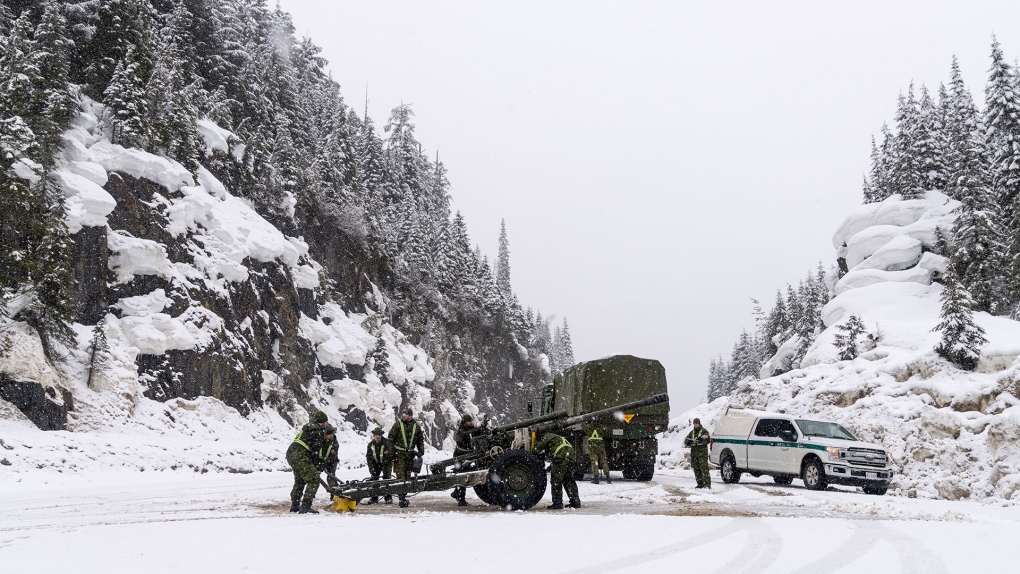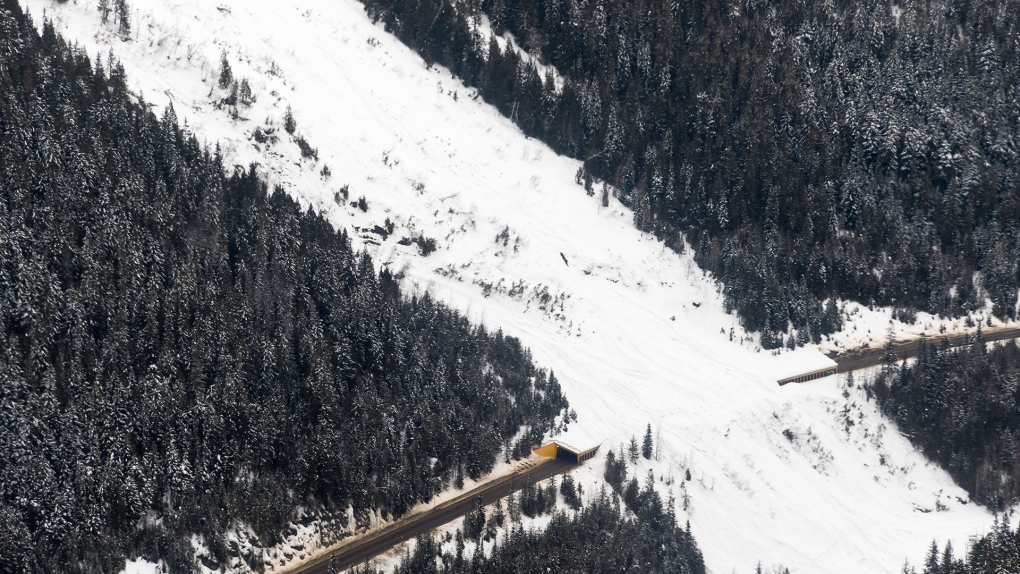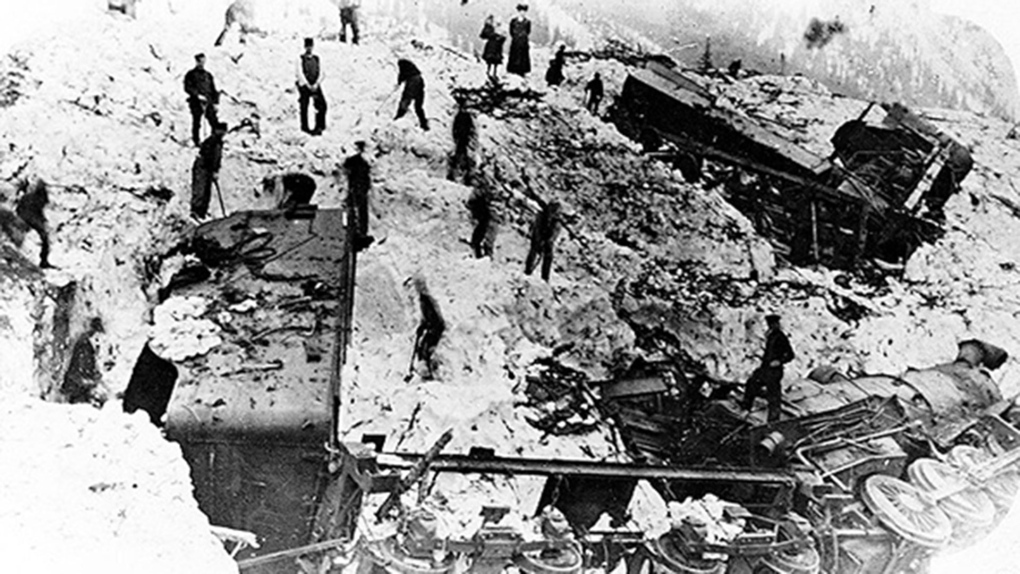Canadian military wages annual war against avalanches in Rogers Pass
Thousands of people travel through the Rogers Pass in Glacier National Park every day and are likely unaware of the dangers around them.
That's because they're driving through the most active avalanche travel corridor in North America.
"We have over two million people per year driving through this stretch of highway and most do not know about the avalanche hazard above them,” said Ross Campbell, an avalanche officer at Parks Canada who is stationed in Rogers Pass.
Rogers Pass is between Revelstoke and Golden, B.C., where the Trans-Canada Highway and the Canadian Pacific Railway snake through the Selkirk Mountains.
At roughly 1,300 metres above sea level, Rogers Pass receives on average 10 metres of snowfall each winter, with more than 130 active avalanche paths criss-crossing a 40-kilometre stretch of the busy highway.
Since 1961, the year before the Trans-Canada Highway fully opened, Parks Canada and the Canadian Armed Forces have worked together to run the world's largest mobile artillery avalanche control program and Canada's longest-running domestic military operation.
Operation Palaci sees troops of artillery gunners from the regular forces and reserves stationed in the Rogers Pass from November to April.
Members man 105mm Howitzer field guns and fire highly explosive rounds from 17 positions along the corridor to release avalanches in a controlled manner before they become a threat to the highway and rail line.
The gunners blast unsteady snow packs from 270 dialled-in targets, up to 5,000 metres away.
"The charge 7 is the highest charge we can shoot this gun on and it allows for the greatest impact. So, we can get vibrations to the snow pack and then cause avalanches in areas of concern," said Lt. Joel Mensah, troop commander for Operation Palaci.
"I feel very rewarded being out here and helping out in this very crucial detail that most people don't realize is needed."
 (Supplied/Parks Canada)
(Supplied/Parks Canada)
In a slow season, the gunners fire between 300 and 500 shells to cause avalanches and that number climbs to 1,000 rounds in a busy season.
The troops work with Parks Canada which is continuously accessing and monitoring the avalanche hazard and determining where and when to conduct shoots.
Other structures help deflect and slow down avalanches from reaching the highway, such as avalanche berms, snow sheds and snow nets.
Highway closures cost $3M/hr in Rogers Pass
There is immense pressure to keep Rogers Pass open with 4,000 vehicles, up to 40 trains, and $77 million dollars worth of good travelling through the transportation corridor daily in the winter.
Parks Canada estimates the costs of closing the highway at $3 million dollars an hour.
"This program is critical to keeping people moving from west to east in Canada," said Campbell.
"We want to keep people safe and the economy moving. It's a really critical route through Canada. It's the Trans-Canada and there's no detours readily available."
Parks Canada closes the road to traffic before each shoot and it takes between two to eight hours to fully clear fallen snow and debris before it can be opened to traffic again. In total, that's roughly 100 hours a year in controlled closures.
"The real challenge we face is the increase in traffic volumes, they just keep on increasing and increasing so it's where we can hold traffic safely out of avalanche terrain that is one of the real challenges," he said.
 (Supplied/Parks Canada)
(Supplied/Parks Canada)
'20 cm below the record snowfall'
Around 2,000 avalanches are recorded along the corridor every year, with about 120 of those slides affecting the Trans-Canada, however, a lack of snowfall is making for a slower season in 2024.
Campbell says the El Niño winter has resulted in less snow and as a result fewer slides in Rogers Pass between November and the start of February.
"We've had 50 per cent less snow than average and we're about 20 centimetres below the record snowfall ever at Mount Fidelity at Rogers Pass,” he said.
"On average, we'll do 12 average control missions per winter and this year we've only done three so far so there has been less avalanche hazard to the transportation corridor this year."
It comes on the heels of last year's deadly avalanche season.
During last year's avalanche season, there were 15 fatalities, with 14 occurring in B.C. and one in Alberta.
Of those, five people died in three different slides near Glacier National Park.
According to Avalanche Canada, the season surpasses the national average of 11 deaths per year from avalanches.
Canada's deadliest avalanche happened along Rogers Pass in 1910, when 58 railway workers were killed while clearing the tracks from an earlier snow life.
 (Supplied/Revelstoke Museum and Archives)
(Supplied/Revelstoke Museum and Archives)
As a result, CP tunnels were dug beneath Rogers Pass and an eight-kilometre Connaught Tunnel was completed under Mount MacDonald in 1916.
CTVNews.ca Top Stories

W5 Investigates A 'ticking time bomb': Inside Syria's toughest prison holding accused high-ranking ISIS members
In the last of a three-part investigation, W5's Avery Haines was given rare access to a Syrian prison, where thousands of accused high-ranking ISIS members are being held.
Trudeau Liberals' two-month GST holiday bill passes the House, off to the Senate
The federal government's five-page piece of legislation to enact Prime Minister Justin Trudeau's promised two-month tax break on a range of consumer goods over the holidays passed in the House of Commons late Thursday.
Irregular sleep patterns may raise risk of heart attack and stroke, study suggests
Sleeping and waking up at different times is associated with an increased risk of heart attack and stroke, even for people who get the recommended amount of sleep, according to new research.
California man who went missing for 25 years found after sister sees his picture in the news
It’s a Thanksgiving miracle for one California family after a man who went missing in 1999 was found 25 years later when his sister saw a photo of him in an online article, authorities said.
As Australia bans social media for children, Quebec is paying close attention
As Australia moves to ban social media for children under 16, Quebec is debating whether to follow suit.
Notre Dame Cathedral: Sneak peak ahead of the reopening
After more than five years of frenetic reconstruction work, Notre Dame Cathedral showed its new self to the world Friday, with rebuilt soaring ceilings and creamy good-as-new stonework erasing somber memories of its devastating fire in 2019.
Canada Post temporarily laying off striking workers, union says
The union representing Canada Post workers says the Crown corporation has been laying off striking employees as the labour action by more than 55,000 workers approaches the two-week mark.
Can't resist Black Friday weekend deals? How to shop while staying within your budget
A budgeting expert says there are a number of ways shoppers can avoid getting enveloped by the sales frenzy and resist spending beyond their means.
Montreal shopping mall playing 'Baby Shark' song to prevent unhoused from loitering
A shopping mall and office complex in downtown Montreal is being criticized for using the popular children's song 'Baby Shark' to discourage unhoused people from loitering in its emergency exit stairwells.

































